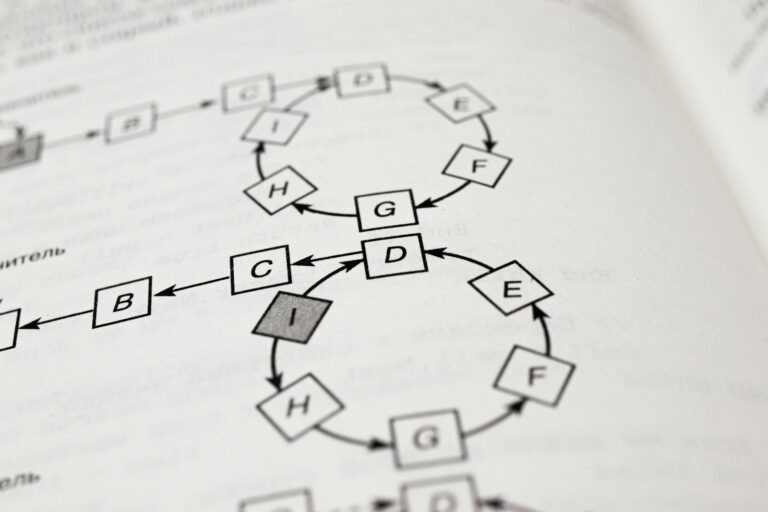Selection Sort is a fundamental comparison-based sorting algorithm that plays a pivotal role in the study of data structures and algorithms. Its simplicity and predictable performance make it a classic choice for academic understanding. This chapter, a core part of the Unit 2 Notes Data Structures, will explore the theoretical and practical aspects of Selection Sort with academic clarity and depth required for B.Tech and BCA students.
Selection Sort works by repeatedly selecting the smallest (or largest, depending on sorting order) element from the unsorted part of the list and swapping it with the first unsorted element. This process continues until the list is completely sorted. The essence of the algorithm lies in the selection of minimum (or maximum) elements and organizing them systematically in their correct position.
Working Principle
Let us assume an array of size N. The algorithm divides the array into two parts: the sorted and unsorted sections. Initially, the sorted part is empty, and the unsorted part is the entire array. During each pass, it searches for the smallest element in the unsorted segment and swaps it with the leftmost unsorted element. This extends the sorted region by one element and reduces the unsorted region accordingly.
Let us understand it with an example array: A = [29, 10, 14, 37, 14]
Pass 1: Find the minimum element in [29, 10, 14, 37, 14]. It is 10. Swap it with 29. Now, A = [10, 29, 14, 37, 14] Pass 2: Find the minimum in [29, 14, 37, 14]. It is 14. Swap with 29. A = [10, 14, 29, 37, 14] Pass 3: Find the minimum in [29, 37, 14]. It is 14. Swap with 29. A = [10, 14, 14, 37, 29] Pass 4: Minimum of [37, 29] is 29. Swap with 37. A = [10, 14, 14, 29, 37]
After all passes, the array is sorted.
Algorithm (Pseudocode)
SelectionSort(A, n)
for i = 0 to n-2
min_index = i
for j = i+1 to n-1
if A[j] < A[min_index]
min_index = j
swap A[i] and A[min_index]Time Complexity Analysis
Selection Sort has predictable performance characteristics. Regardless of the nature of the input, the number of comparisons remains the same.
Best Case Time Complexity: O(n^2) Average Case Time Complexity: O(n^2) Worst Case Time Complexity: O(n^2) Space Complexity: O(1), as Selection Sort is an in-place sorting algorithm. Stable Sort: No (unless modified)
Characteristics of Selection Sort
- In-Place Sorting: It does not require any additional storage space.
- Non-Stable: Equal elements may not retain their original order.
- Deterministic: Gives consistent behavior for any input.
- Not Adaptive: Does not take advantage of existing order in the array.
Dry Run Example
Consider A = [64, 25, 12, 22, 11]
Initial Array: [64, 25, 12, 22, 11]
Pass 1: Minimum is 11. Swap with 64 → [11, 25, 12, 22, 64] Pass 2: Minimum in [25, 12, 22, 64] is 12 → [11, 12, 25, 22, 64] Pass 3: Minimum in [25, 22, 64] is 22 → [11, 12, 22, 25, 64] Pass 4: Minimum in [25, 64] is 25 → [11, 12, 22, 25, 64]
Sorted Output: [11, 12, 22, 25, 64]
Implementation in C
#include <stdio.h>
void selectionSort(int arr[], int n) {
int i, j, min_idx, temp;
for (i = 0; i < n-1; i++) {
min_idx = i;
for (j = i+1; j < n; j++)
if (arr[j] < arr[min_idx])
min_idx = j;
temp = arr[min_idx];
arr[min_idx] = arr[i];
arr[i] = temp;
}
}Applications of Selection Sort
While Selection Sort is not preferred for large datasets due to its O(n^2) time complexity, it still finds utility in scenarios where memory writes are more costly than comparisons. It is useful in embedded systems, and small lists, and as a teaching tool to illustrate sorting principles. In practical applications, it can also be employed where a stable and adaptive algorithm is not mandatory.
Variants and Optimizations
Selection Sort can be modified for performance or stability. Variants like Bidirectional Selection Sort perform both minimum and maximum selections in a single pass. Though such optimizations slightly improve performance, they do not change the overall O(n^2) complexity. Stable Selection Sort can be achieved by shifting elements instead of swapping.
Comparison with Other Sorting Algorithms
| Algorithm | Time Complexity (Avg) | Stable | Space Complexity | Adaptive |
|---|---|---|---|---|
| Selection Sort | O(n^2) | No | O(1) | No |
| Insertion Sort | O(n^2) | Yes | O(1) | Yes |
| Bubble Sort | O(n^2) | Yes | O(1) | Yes |
| Merge Sort | O(n log n) | Yes | O(n) | Yes |
| Quick Sort | O(n log n) | No | O(log n) | No |
📌 Insert Diagram: Selection Sort Working Mechanism with Passes
🔹 Short Answer Questions (2–3 Marks)
- What is the best-case time complexity of Selection Sort? — O(n^2) as it does not change based on input order.
- Is Selection Sort stable? — No, unless modified to preserve the order of equal elements.
- Why is Selection Sort not adaptive? — It makes the same number of comparisons regardless of input order.
- What kind of sorting is Selection Sort? — It is an in-place comparison-based sorting algorithm.
- Can Selection Sort be used for large datasets? — No, because of its poor time complexity.
🔸 Long Answer Questions (5–10 Marks)
- Explain the working of Selection Sort with a dry run. — [Refer to the dry run example above with array [64, 25, 12, 22, 11]]
- Compare Selection Sort with Insertion and Bubble Sort in terms of stability, adaptiveness, and complexity. — [Refer to the comparison table above for structured response. Explain each point in 3-5 sentences.]
- Write the algorithm and code for Selection Sort in C. Explain each step. — [Include pseudocode and C implementation. Explain loop roles, swapping, and indexing.]
- Discuss the drawbacks and optimizations of Selection Sort. — O(n^2) time, not stable, not adaptive; optimized using bidirectional selection and stability by shifting.
- Where is Selection Sort used in real-world applications? — Small arrays, teaching, embedded systems where memory writes matter more than comparisons.
📝 Chapter Summary
Selection Sort is a basic sorting technique used in B.Tech Data Structures Notes 2025It is part of Unit 2 Notes Data Structures and often asked in examsIt selects the smallest element and swaps it with the current positionIt works in O(n^2) time for all cases making it inefficient for large dataIt is in-place but not stable unless modifiedIt does not adapt to already sorted inputIt is used in small systems, teaching, and where memory writes should be minimizedComparison with other sorting algorithms highlights its simplicity but lower performanceUnderstanding its mechanism is vital for Engineering Study MaterialPreparation
📘 Model Paper / Sample Internal Exam Questions
- Explain Selection Sort algorithm with an example and C code.
- Differentiate between Selection Sort and Insertion Sort.
- Why is Selection Sort considered non-adaptive? Justify with an example.
- Write short notes on the space and time complexity of Selection Sort.
- Is Selection Sort stable? Explain with a case where it fails to be stable.



